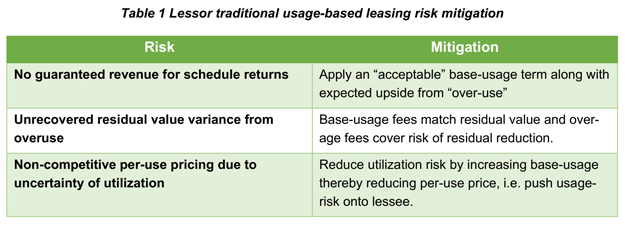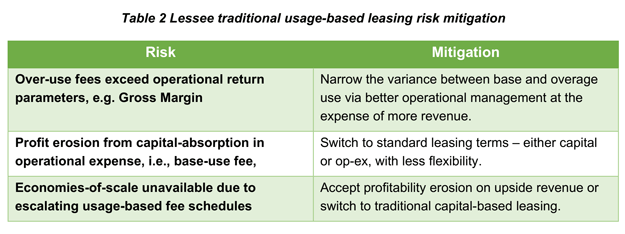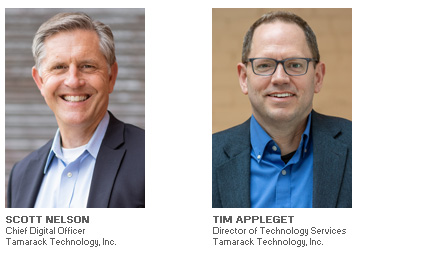
“Why should I pay for more than I use?”
It’s a simple question and not new. Usage-based leasing (UBL), also called consumption-based financing in some circles, has been around for decades but has become of keen interest post-COVID because it speaks to market demands for flexibility.
“Paying only for what I use” promises lower pricing for lessees creating the expectation of higher demand for financing services from lessors. But there is an even more compelling reason for lessors to have UBL on their roadmaps: The buying preferences of Gen Y – the Millennials. Millennials live the experience economy. They have grown up in a usage-based economy – cell phone data plans, on-demand streaming media accounts and transportation via car, bike, and scooter sharing. Gen Y believes “pay for what I use” is the standard, not the exception and here’s the kicker: as the largest generation to date – 88 million in the U.S., 10 million more than the Baby Boomer generation - they will define economics for the next 30 years.
Embrace the inevitable: Usage-based leasing will soon be the standard, not a novelty, for successful lessors.
Contemporary behaviors aside, UBL has been around for decades. For years, IT, office equipment and medical imaging systems have been leased with a consumption model. These classes of equipment are stationary and long-lived so the variances in utility are relatively easy to factor. Perhaps the most-known usage-based billing experience is found in copier leasing. The lessor and lessee economic value has typically been defined by the following terms:
- Fixed Rental – derived from historical usage pattern that becomes the baseline usage fairly priced (e.g. 5,000 copies per month)
- Variable Overage Charge – derived from excess copies over the baseline usage amount (e.g. The company made 250 copies over the 5,000-baseline cost). Overage fees can be billed at different intervals (e.g. monthly, quarterly, semi-annually, etc.)
- Inflation Adjustment – often copier lessors have an inherent price escalator built into contracts to accommodate changes in operational costs on the copier (e.g. like anything else, copier maintenance increases with age). Price escalators can be as high as 7 to 8 percent per year on the base and/or the variable overage amount.
The problem with this model is that it does not meet the modern usage-based expectations of lessors or lessees. Lessees expect the lease to scale with them as they grow their business without erosion of profit. They envision true OPEX models with no capital expense (i.e., base payment). Lessors envision offering lower prices and more agile terms creating a more desirable leasing product. Lessors hope to recover lost asset utilization thereby increasing returns and sustainability. Unfortunately, the copier lease model does none of these things.
To understand why the traditional UBL will not work in today’s economic environment, let’s look at how this model attempts to mitigate the risks for both sides of the transaction. Table 1 shows the risks and mitigation for lessors and Table 2 shows the same for lessees.


The analysis shows how the goal of UBL – (pay only when I use) – constrains the value of the terms unless I know exactly how much I am going to use. Traditional UBL contracts are self-limiting from a business value point of view for both lessees and lessors.
The fundamental problem with traditional usage-based financing models is that neither party has mitigated the source of risk in the relationship – usage variance. Lucas and Breeden first derived the pricing model for consumption-based capital assets in the late 1970s and showed price is dominated by the variance of consumption/use. The key to this finding is that consumption/use in UBL is a lessee behavior. Both lessors and lessees must understand and manage lessee asset-use behavior if the economic advantage of UBL is to be realized.
Fortunately, connected technology provides a solution and other industries offer examples. The solution lies in developing a statistical, read “digital”, understanding of usage behavior and then combine those models with software tools that predict usage before the risk of variance is realized. Consider three examples:
- Usage-based insurance providers have connected customer vehicles to create both digital models for drivers by segment AND a safety profile for any given customer. The model saves the insurer money via better risk segmentation and both driver and insurer save money via drivers’ safer driving behavior facilitated by awareness of financial consequences.
- HVAC (heating ventilation and air conditioning) manufacturers offer monitoring and controls that simultaneously inform energy providers of equipment usage and let homeowners understand heating and cooling costs as a function of their behavior. Utilities are inherently usage-based models, but connectivity and user engagement help them manage use to better outcomes for both the provider and consumer.
- Water treatment providers now offer contracts for “clean water use” vs. water treatment equipment. The connected systems monitor and predict water use so that chemical replenishment and maintenance can be provided prior to any reduction in service but only when needed thereby optimizing costs for both the customer and the supplier. Brewers only pay for the clean water they use – no extra chemicals, service calls or capital.
Usage-based leasing is going to be the dominant contract type, but your father’s copier lease terms will not meet the expectations of either lessor or lessee. Equipment finance providers must use equipment connectivity to engage users to reduce usage variance. New digital business models must take advantage of data to both predict and manage user behavior thereby reducing the fundamental risk – usage variance.
Digital technology enables term structures that create better economic value for both parties – “You only pay for what you use.”
